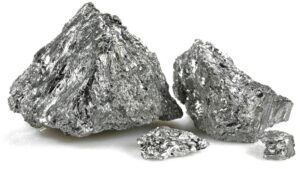Alicanto exploration pushes the boundaries of Sala mineralisation out

Keep the hits coming at Sala. Pic: Getty
Alicanto’s exploration has extended high-grade silver and zinc mineralisation at its Sala silver-lead-zinc project in Sweden over 3km of strike.
Step-out drilling has returned some cracking results such as:
- 3.5m grading 237 grams per tonne (g/t) silver, 2.8% zinc and 4.6% lead from a depth of 488m.
- 4.4m at 283g/t silver, 3.9% zinc and 1.9% lead from 107.2m
- 1.4m at 413g/t silver, 2.6% zinc and 1.3% lead from 258.6m that extends the known mineralisation, which remains open.
The other take out here also getting the Alicanto team excited – rock chip sampling has defined multiple new silver, zinc, lead, copper and gold targets with results of up to 1,480g/t silver, 10.3% zinc and 1.3% copper in separate samples.
A detailed geological review by Alicanto Minerals (ASX:AQI) has now identified Sala mineralisation over a 3km strike and 1.5km width, which makes it of comparable scale to the Garpenberg mine just 50km to the northwest that produced 54.4Mt of ore and still hosts an ore reserve of 89.5Mt at 2.8% zinc, 1.3% lead and 94g/t silver.
Three rigs are continuing work to extend polymetallic mineralisation at the Prince and Sala areas.
“These results support our strategy to build a substantial resource at Sala with the potential to underpin a stand-alone operation,” managing director Peter George said.
“We are well funded for 2022 with our recent $7m capital raising and we continue to grow the boundaries of the known mineralisation at Sala. The mineralisation remains open and we have three rigs drilling now.”
Research highlights Sala mineralisation types
Alicanto adds that recently published academic research has outlined several stratabound medial magnetite-serpentine horizons at Sala that are closely associated with zinc-lead-silver mineralisation.
Several branches of stratabound sulphide mineralised magnetite-serpentine horizons, which have magnetic signatures detectable with modern geological equipment have been identified.
These are interpreted to each represent different stratigraphic levels of the limestone sequence.
Meanwhile, the classic Sala galena-silver mineralisation is strongly structurally controlled and crosscuts the stratabound type. This silver-rich mineralisation has low sulphide content in this area.
More targets
A third mineralisation style represents more intrusion-proximal massive pyroxene with strong sphalerite mineralisation that has only been identified at the Glas workings in the southern part of the system and represents an attractive future exploration target.
The company added that newly published material by the government’s geological survey covers all known sulphide showings in Sala Region, with published rock chip assay results further supporting the exploration potential elsewhere from Prince Lode.
This article was developed in collaboration with Alicanto Minerals, a Stockhead advertiser at the time of publishing.
This article does not constitute financial product advice. You should consider obtaining independent advice before making any financial decisions.
Related Topics
UNLOCK INSIGHTS
Discover the untold stories of emerging ASX stocks.
Daily news and expert analysis, it's free to subscribe.
By proceeding, you confirm you understand that we handle personal information in accordance with our Privacy Policy.








